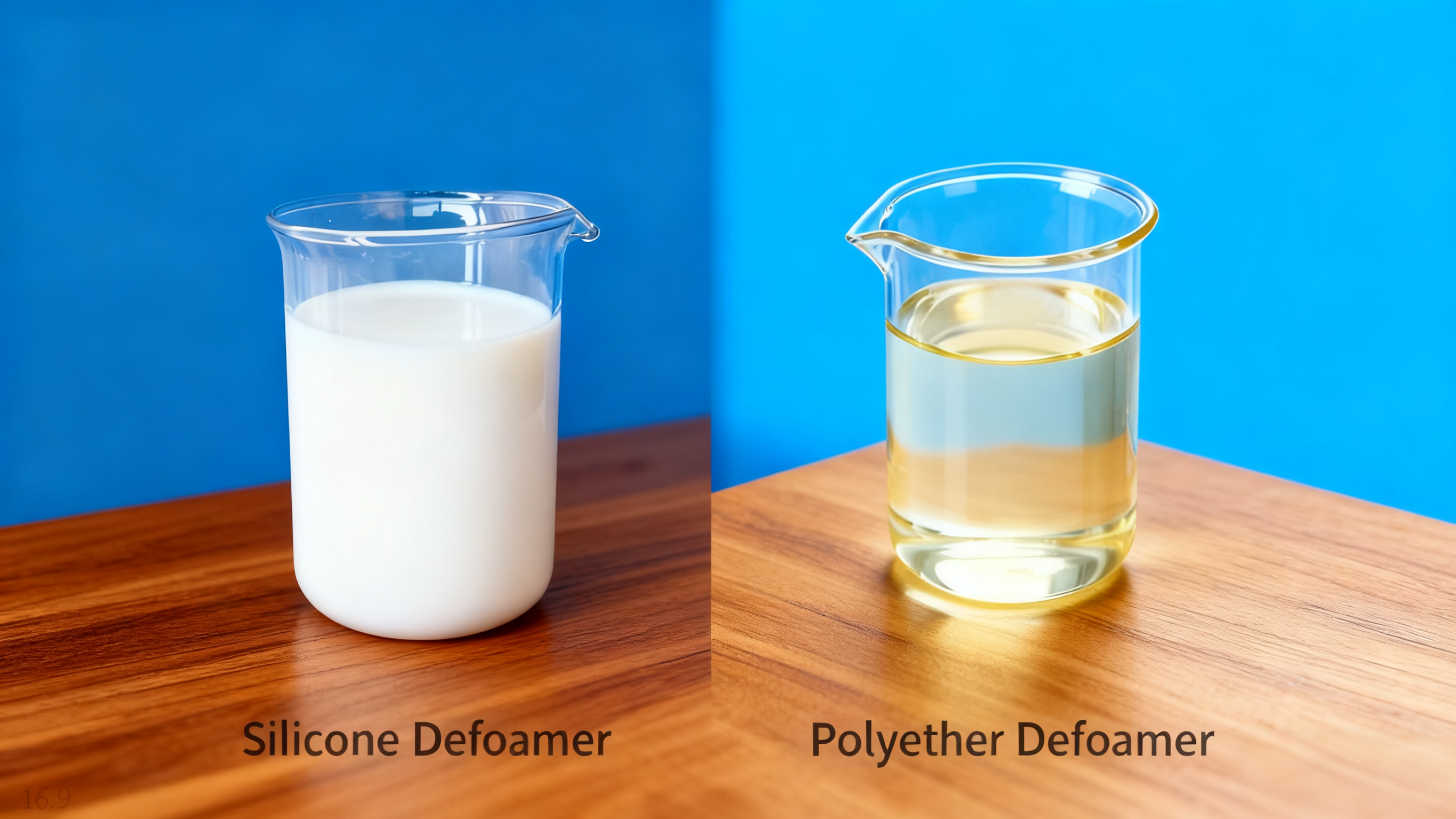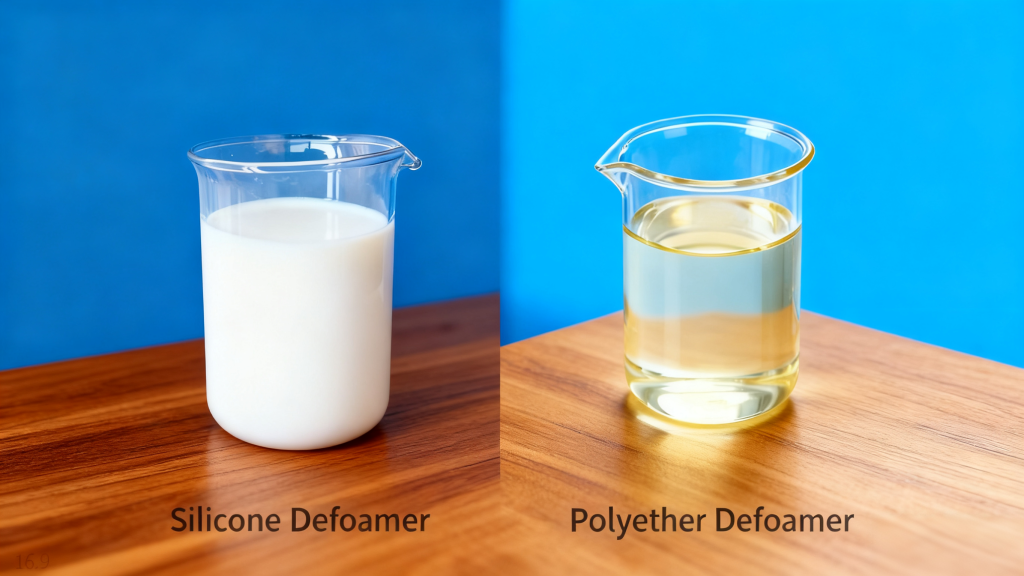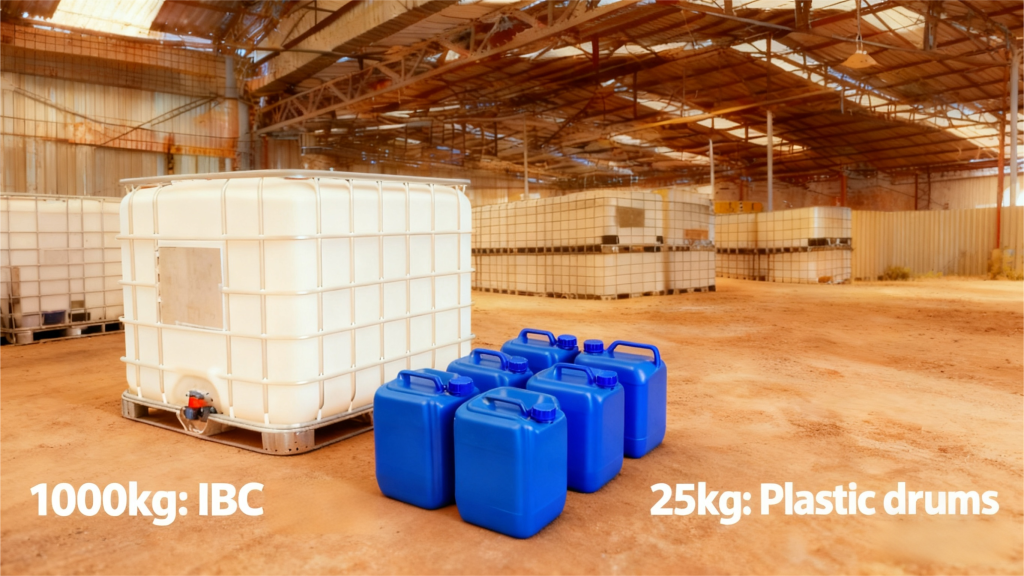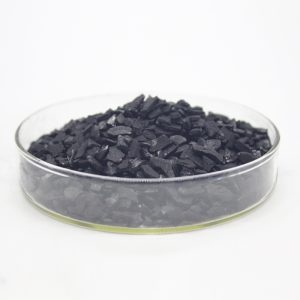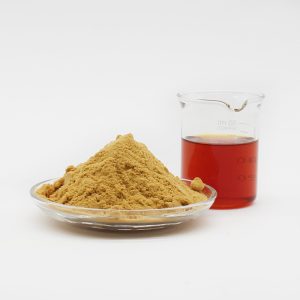I. Product Description
Silicone Defoamers and Polyether Defoamers are two of the most widely used defoamer categories in industrial applications. Their unique chemical structures impart distinct performance characteristics, making them suitable for various demanding foam control needs.
-
Silicone Defoamer
-
Key Composition: Polydimethylsiloxane (PDMS) and its modified derivatives as the primary active components.
-
Physical Form: Commonly available as emulsions, pastes, and pure oils.
-
Key Features: Rapid defoaming action, long-lasting foam suppression, chemical inertness, temperature resistance (high and low), and low or non-toxicity. Their very low surface tension allows for quick spreading and rupture of foam films.
-
-
Polyether Defoamer
-
Key Composition: Block or graft copolymers of polyoxypropylene (PPO) and polyoxyethylene (PEO) as the primary active components.
-
Physical Form: Typically clear, colorless to light yellow liquids.
-
Key Features: Excellent resistance to high temperatures and strong alkalis, high dispersibility, water solubility, and often exhibit “inverse solubility” (cloud point effect) at specific temperatures, triggering effective defoaming at the point of foam generation.
-
II. Application Fields
Due to their different properties, these defoamers have distinct, sometimes overlapping, primary application areas. They can also be blended for optimal performance.
-
Typical Applications of Silicone Defoamers:
-
Water Treatment: Foam control in industrial and municipal wastewater treatment processes.
-
Coatings & Inks: Water-based paints, latex paints, and printing inks to prevent coating defects.
-
Metalworking Fluids: Foam inhibition in cutting fluids and cleaning agents.
-
Textile Dyeing & Printing: Defoaming in pre-treatment, dyeing, and printing processes.
-
Adhesives & Resins: Defoaming during synthesis and production.
-
Chemical Manufacturing: Various processes including fermentation, distillation, and extraction.
-
-
Typical Applications of Polyether Defoamers:
-
Fermentation Industry: Critical for foam control in the production of antibiotics, monosodium glutamate (MSG), yeast, etc.
-
Paper Industry: Processes like pulping, washing, and coating under high-temperature and alkaline conditions.
-
High-Temp & Strong Alkali Systems: Industrial cleaners, textile scouring agents, pesticide formulations.
-
Chemical Synthesis: Providing defoaming function while also acting as an emulsifier or dispersant.
-
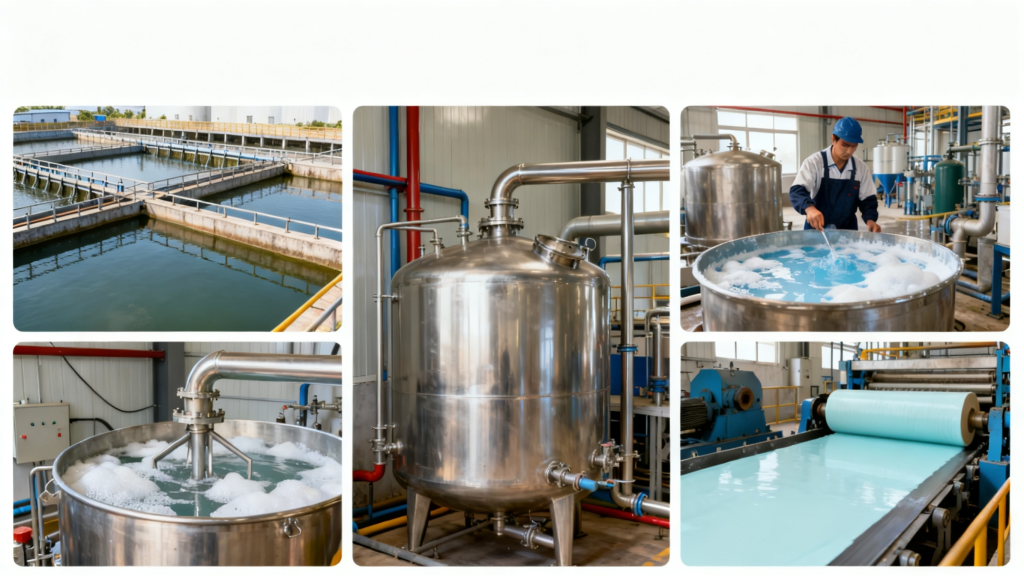
III. Common Packaging
-
25 kg: Plastic drum (most common for small/medium batches).
-
1000 kg: IBC totes (suitable for large-scale industrial users).
IV. Storage Conditions
-
Environment: Store in a cool, dry, well-ventilated indoor area. Protect from direct sunlight and rain.
-
Temperature: Recommended storage temperature between 5°C and 35°C. Protect emulsion-type silicone defoamers from freezing, as this can break the emulsion and cause failure.
-
Shelf Life: Typically 12 to 24 months from the date of manufacture in the original, unopened container. Refer to the specific product data sheet for the exact shelf life.
-
Sealing: Keep containers tightly closed after use to prevent evaporation, contamination, or degradation.
V. Usage Instructions
-
Dosage:
-
Defoamers are typically used at low levels. A recommended starting dosage is 0.05% – 0.3% of the total system weight. The optimal dosage should be determined by on-site testing.
-
Adding small amounts multiple times (“little and often”) often works better than a single, large dose.
-
-
Dilution:
-
Silicone Emulsion Defoamers can be diluted with water. Crucially: add water slowly to the defoamer under gentle agitation, or use thickened water to prevent emulsion breakdown. Diluted products should be preserved and used promptly.
-
Polyether Defoamers are generally easily dispersed or soluble in water and can be diluted as needed.
-
-
Addition Point:
-
The optimal point and method of addition (continuous drip or batch addition) are crucial for effectiveness. Addition often occurs at the start of the process or just before stages prone to foaming.
-
It is strongly advised to conduct small-scale foam tests to determine the best defoamer type, addition point, and dosage for your specific system.
-

